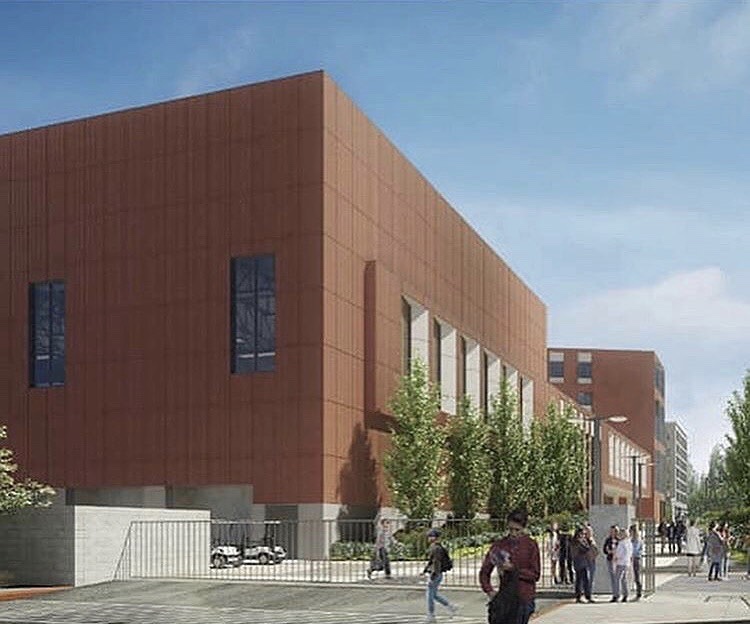New building breaking ground this winter
Courtesy of PPS Board of Design Review
Construction on the new Lincoln building will kick off at the start of 2020. Photo Courtesy LINCOLN HIGH SCHOOL
After years of bond measures, board meetings and drafts of design plans, the construction process has finally begun for the new Lincoln building.
The final step of approval was by the City of Portland’s Design Review Committee. As the only Portland public school in downtown Portland, the new building had to adhere to specific standards set by the Central City 2035 (CC2035) plan– one factor among many that helped to complicate the building process.
“Probably the most surprising thing about this whole process is, ironically, how smoothly it’s gone,” says Principal Peyton Chapman. “There were so many little details that could have held us up even further, so I’m actually really impressed.”
The process for the rebuild began when voters passed a $790 million bond measure in May of 2017 that funded the rebuilding of four Portland Public Schools (PPS), including Lincoln; however, as the process continued, the projected cost of the four buildings grew higher and higher, ultimate ly coming in at $89 million over budget a year later.
“It’s no coincidence that [President Trump’s] steel tariffs coincided so neatly with us going over budget,” explains Chapman. “Everything just got more expensive– which is not something anyone enjoys explaining to voters, to families, or to the City of Portland.”
As a result of the increased cost, concessions had to be made. The yoga and wrestling rooms were merged; a space for Career & Technical Education (CTE) was removed; and new innovations for the Lincoln theater department, such as a fly tower, were redesignated as “optional,” according to the official breakdown of the 2018 Lincoln master plan.
These concessions marked are only the beginning. Portland’s stringent CC2035 plan regulations meant that the initial building plan went from a 10story building with two additional gyms and parking for teachers to one six-story building.
When students were asked about their hopes for the new building in an online survey, concerns about parking were most prominent. Chapman explained that the new building will have no parking available whatsoever.
For most Lincoln teachers, the last meeting providing them with substantive information about the rebuild was roughly a year ago; some have expressed concerns about the lack of specificity in the design plans.
“There are 55 general ed classrooms in the school [right now],” says Maggie Raczek, a Lincoln science teacher. “There will be 52 in the new building, so moving into a ‘new’ building with even less is very concerning.”
“I think the new building would have benefitted from teacher and staff input. We get general meetings, but there is little to no knowledge of actual specifics,” said Raczek. “And everything that’s a concern for teachers is a concern for students because it impacts their education.”
“Well, the ed specifications for all of the new high schools are fully available,” Chapman said when asked about teachers’ concerns. “Teachers have been asked to come and give feedback to architects during the design process as well, so I don’t necessarily share that concern.”
PPS uses standardized models for various classrooms, many of which can be seen at newer rebuilds such as Franklin High School. According to Chapman, a standard science lab or English classroom at Franklin is a “pretty good” indicator of what they’ll look like in the new building.
Razcek mentioned that Franklin is already experiencing issues of its own, however. Two years in, the new building has suffered damage from mold and water leak issues. Razcek has concerns over whether Lincoln will face similar consequences.
“There’s still so much we don’t know,” says Chapman. “On this, I agree. Not having parking for teachers is a big issue. Our difficulty finding space to replace the Mike Walsh field is a big issue. It’s all very exciting, but even though we’re starting construction we still have a ways to go.”

